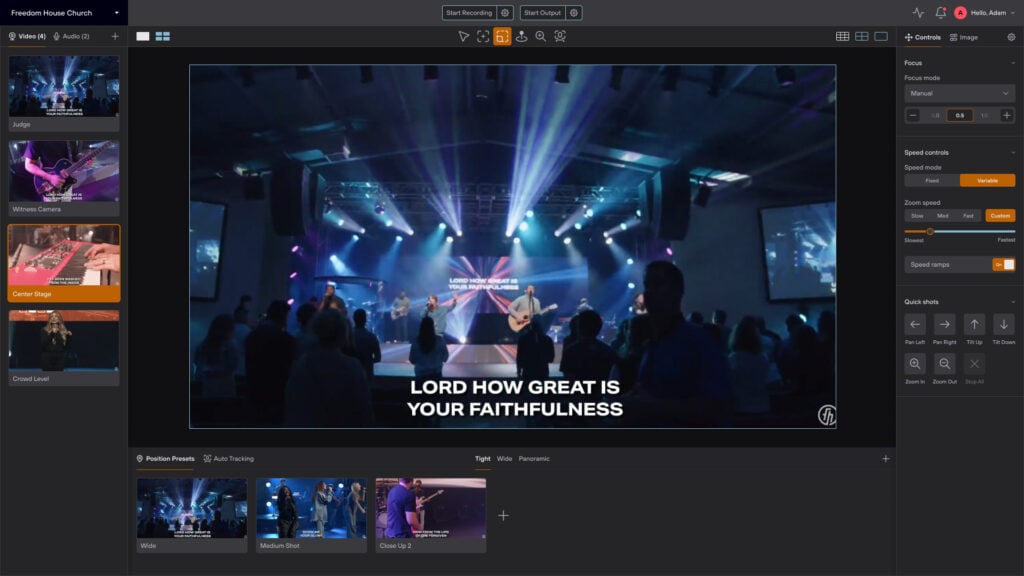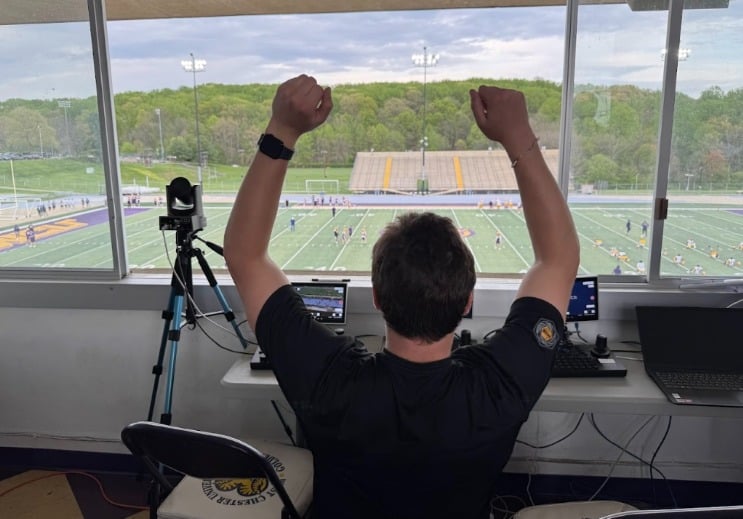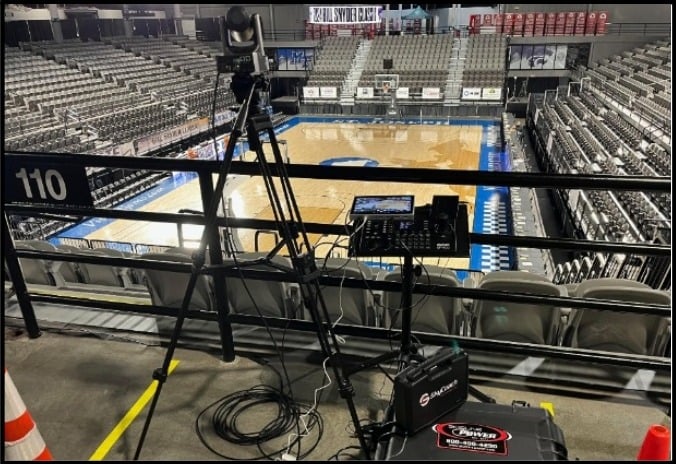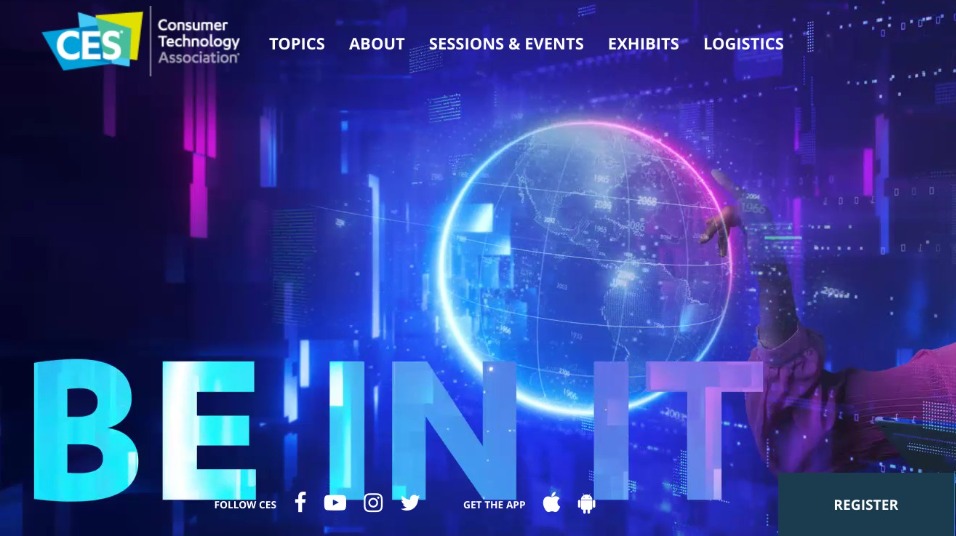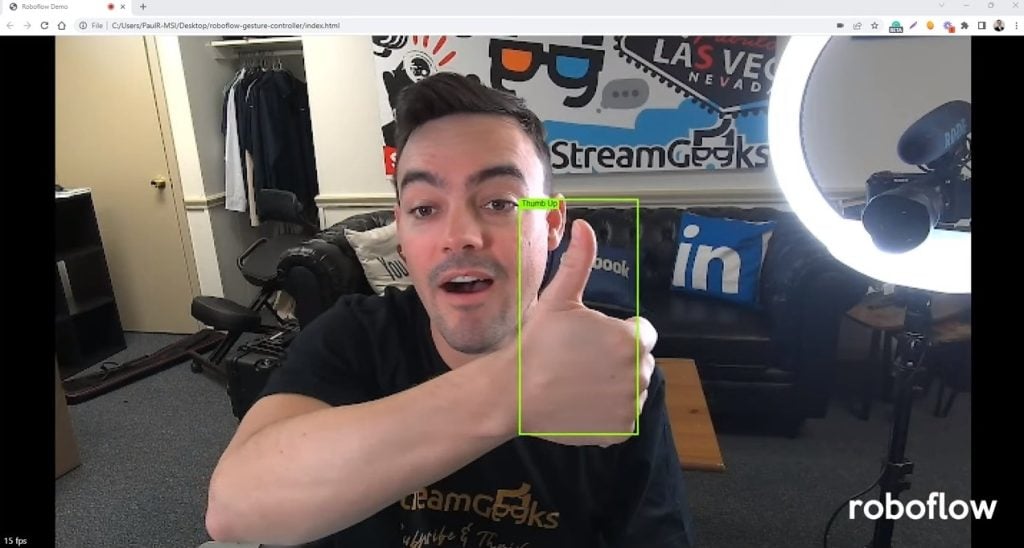All About Auto-Tracking Cameras
Written by Paul Richards on November 28, 2022
Finding the best auto-tracking camera
Over the past few years, pan, tilt, and zoom (PTZ) cameras have become popular in audio-visual systems around the world. PTZ cameras are different from regular manually controlled cameras because they feature robotic control which gives users the ability to remotely control operations such as pan, tilt, and zoom. This means that you can operate PTZ cameras with a joystick controller in the same room or in a totally separate country anywhere in the world. Robotically controllable cameras have changed the way video producers and content creators think about setting up and managing audio-visual systems.
Auto-Tracking Camera
Recently, many PTZ cameras have advanced to include fully automated robotics that can follow a subject on stage or frame a group of individuals sitting a meeting room table. New auto-tracking camera technologies have made it possible for audio-visual managers to manage multiple cameras in multiple locations without the need for constant monitoring or dedicated camera operators. In this blog post, you can learn about some of the latest auto-tracking camera technologies and where they are being used to automate audio-visual solutions.
There are three main categories for auto-tracking cameras which are: those that require software, those with built-in auto-tracking (and therefore do not require additional software running on a computer), and cameras that offer a hybrid approach with both built-in tracking capabilities and remote management software.
Auto-Tracking Camera Categories
- Software-power auto-tracking – Requires a PTZ camera (often without built-in auto-tracking) and a computer running a software solution that provides intelligent controls to follow a subject.
- Built-in auto-tracking – Requires a specific auto-tracking camera with built-in auto-tracking capabilities. This category of cameras does not require an additional computer or software.
- Hybrid auto-tracking cameras – This category of auto-tracking cameras has built-in auto-tracking capabilities with optional software designed for setup and tuning the auto-tracking functionality of the camera.
In general, automated PTZ camera movements are being used either to track a single subject on stage or a group of people in a given space. When a PTZ camera is set to automatically track a subject on stage this is called “auto-tracking” and when a PTZ camera is set to automatically frame a group of subjects this is called “auto-framing.”
Types of PTZ camera automation
- Auto-Tracking – The ability to automatically steer the pan, tilt, and zoom functions of a camera in order to follow a subject.
- Auto-Tracking – The ability to automatically steer the pan, tilt, and zoom functions of a camera in order to frame a group of subjects.
When you are selecting an auto-tracking camera for a specific purpose it’s important to consider the space you are planning to install and use the camera. Auto-tracking cameras can have different software and hardware limitations you should be aware of. For example, the first specification to consider is the optical zoom and field of field of view. The optical zoom represents how far the camera can zoom in to view a subject from a distance. The field of view represents how wide the angle of view will be inside of your space based on the location of the camera. These are standard specifications that you should consider when buying any PTZ camera.
Hardware versus Software Solutions
PTZOptics Auto-Tracking Software
Today there are a variety of software options available to add auto-tracking capabilities to a camera image. For example, Open Broadcaster Software is a free open-source video software that can be used with a plugin called Face Tracker. With this plugin you can easily make any webcam image follow your face and automatically center your face in the image as you move. The PTZOptics Camera Management Platform (CMP) is another software option that allows you to take a standard PTZ camera and add auto-tracking capabilities. Software solutions are a great way to get started with auto-tracking capabilities because they are often free and easy to use. The drawback to software solutions comes in play when you have multiple cameras you need to manage. This is where cameras with built-in auto-tracking capabilities become preferred. Hardware solutions like the HuddleCamHD SimplTrack 2 have built-in auto-tracking capabilities that do not require software to be running on a computer. Hardware solutions are more reliable and have the ability to run 24/7 without the potential point of failure that software introduces.
| Benefits of Software and Hardware Auto-Tracking Camera Solutions | |
| Software Pros |
|
| Software Cons |
|
| Hardware Pros |
|
| Harware Cons |
|
Many auto-tracking cameras include a list of features designed for specific auto-tracking or auto-framing needs. For example, the HuddleCamHD SimplTrack2 has a featured called “Blocking Zones” which allows you to block specific areas in a scene where you do not want the camera to track. This is ideal for example in a classroom environment where a doorway may have students coming in and out. Other auto-tracking cameras such as the PTZOptics G2 cameras offer the ability to set up customized head or body tracking areas.
Here is a list of auto-tracking features that are available today:
- Blocking Zones – Blocking Zones are used to create areas of a scene where you do not want an auto-tracking camera to use.
- Auto Zoom – Auto Zoom is a feature that allows the auto-tracking camera to automatically zoom into a subject when they move farther away from the camera. When a subject moves closer the camera will automatically zoom out.
- Auto Tilt – Auto Tilt is a feature that allows the camera to tilt up and down when the subjects move in the scene.
- Custom Body Heights – A Custom Body or Face Height can be used to customize the amount of space surrounding the subject the camera is set up to automatically follow.
- Audio Tracking – Audio Tracking is a feature that uses microphones to determine where the camera should capture video. Audio Tracking is ideal for having cameras move to a specific location in a space where multiple people are located such as a boardroom table.
- Preset Zones – Preset Zones are areas of a scene that can be set up to trigger specific events. For example, a Preset Zone could be set up to start live streaming when a presenter waves their hand over a specific area in the space.
- Lost Subject Preset – This feature allows the auto-tracking camera to go back to a specific PTZ camera location if the subject is lost.
- Stage Preset – This feature allows you to frame the stage and make sure specific areas of interest are always in view. For example, you may want the entire whiteboard space to be in view even when the camera is following the presenter left and right.
Configuring an Auto-Tracking Camera
auto-tracking camera software
When you are setting up an auto-tracking camera in your space some or all of the features above can be helpful in ensuring that your camera is able to track your subject most effectively. While many auto-tracking cameras will work right out of the box, most require some tuning to perform at their best. As you test out an auto-tracking camera, one of the first features to adjust is the pan and tilt speeds. In many cases, presenters move left and right on a stage or at the front of a classroom, but they do not move forward and backward much. In these cases, you can adjust the tilt speed down to a very low setting, and test a few pan speeds until you find a smooth setting to follow your presenter.
Choosing an Auto-tracking Camera
One of the biggest differences between auto-tracking cameras is the use of hardware versus software technology to power the automatic camera tracking. Software solutions such as the PTZOptics Camera Management Platform (CMP) provide reliable auto-tracking but it requires a Mac, PC or Linux computer to be running at all times. Software solutions like the PTZOptics CMP or the Bird-dog Cam Control, can be used to quickly add auto-tracking to a camera on your local area network (LAN). Cameras such as the HuddelCamHD SimplTrack or the PTZOptics Gen 3 cameras, provide auto-tracking capabilities built into the hardware. Auto-tracking cameras with built-in tracking capabilities do not require additional computers or software and therefore are easier to deploy and manage in most scenarios. The HuddleCamHD SimplTrack Lite and SimplTrack 2 are what would be considered hybrid auto-tracking systems because they offer built-in auto-tracking capabilities with a robust software management system that can be used to set up and tune the cameras as needed.
Ultimately, auto-tracking and auto-framing cameras have the ability to automate many video production, lecture capture, and online communications systems. Audio-visual professionals often choose specific auto-tracking camera systems based on the video outputs and feature sets that are available for their audio-visual installations.
